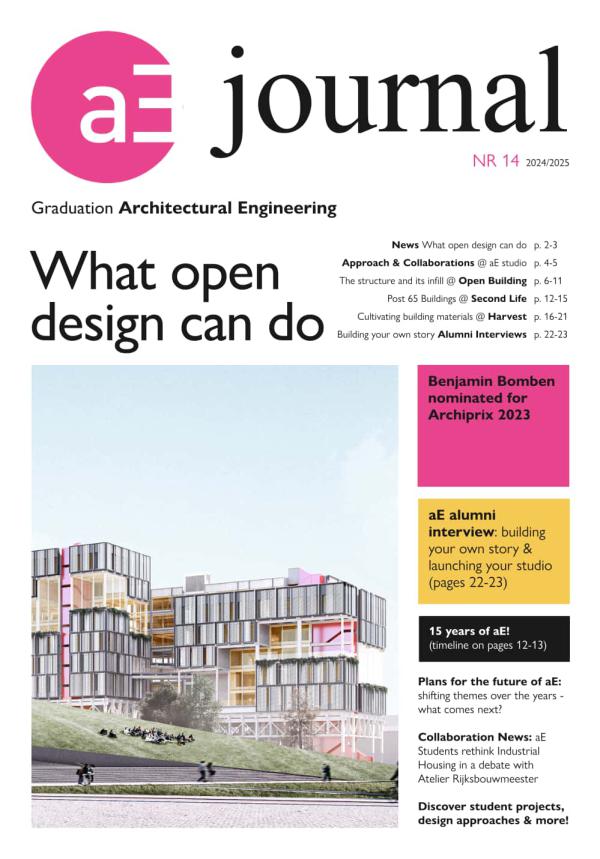
Synopsis
Last summer, the Day of the New Architect provided us with a good reason to reflect on the 15 years of aE, assess our development in Architecture and Technology and identify opportunities for the future. How are we passing on knowledge, and where do our alumni go from there? What skills do students nowadays require for their professional lives?
Form follows Technology
Initially, aE focused heavily on developments in technical and manufacturing domains. For example, early projects emphasized the polyvalent facade and the possibilities of parametric design. For students, this inspired the creation of industrially engineered projects where the beauty of these projects lay in the architectural translation of engineering concepts. They were characterized by the principle of form follows function, dictated by the technology deployed and the ideology of the time, resulting in unique and exceptional designs.
Design as research
With the growing emphasis on sustainability and significant social challenges we must face, our approach has evolved. Navigating through technical possibilities and exploring their holistic potential became the central methodology of the studio.
This systemic approach led to numerous inspiring projects, such as transforming the industrial city of Parkstad into Garden City 2.0, learning from do-it-yourself initiatives and community-based strategies in Bandung/Indonesia, and harnessing innovation for the Marineterrein in Amsterdam. Various experimental sites and living labs in both rural, and urban environments across the globe have served as inspiration for developping strategies and visions for these projects.
Moreover, we engaged with stakeholders like the Amsterdam Medical Centre and the government to explore case studies from their existing building stocks. Students investigated opportunities for renewal within these vast structures, focusing on benefits for users, the community, and the very architecture of these constructions.
What open design can do
Both existing building structures and new building systems have become architectural experiments. Emphasizing circular and adaptive design opens opportunities to enhance the sustainability of construction. How can intelligent standardisation lead to quality architecture? What material applications are conceivable? What expression is possible?
In Open Building (p. 6), we explore the structure and components, their coherence, and quality. In Second Life (p. 14), the focus shifts to strategies addressing social issues like social cohesion, energy transition, and biodiversity. Harvest (p. 18) considers ecosystems, material use, and flows, in relation to reuse and renewable resources for creating quality architecture.
Across all scales, the Paris goals are rigorously examined, from structure to nail. This makes tools like parametric design and solutions such as the polyvalent façade more relevant than ever. However, as designers, we must add meaning and value to these tools and solutions, connecting to both the context and the user needs and setting the parameters for good design.





